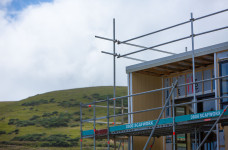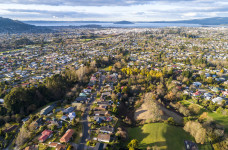Emissions reduction plan
The emissions reduction plan sets out how Aotearoa New Zealand will meet its emissions reduction targets for 2022-2025. It also sets a path for meeting our long-term emissions reduction targets. The plan requires action across every sector of the economy to create a low-emissions future with cleaner energy, better transport options and healthier homes.
Emissions reduction targets and budgets
The Climate Change Response Act sets a target of reaching net-zero carbon emissions by 2050. It also requires the creation of emissions budgets, which are interim emission reduction targets that step toward the 2050 target and have to be met through domestic action alone.
The plan sets out how New Zealand will meet its first emissions budget, covering 2022-2025. This budget limits our emissions to 290 metric tonnes of carbon dioxide equivalent between now and 2025. It also sets a path for meeting our long-term emission reduction targets.
Read the emissions reduction plan(external link)
See the Climate Change Response Act(external link)
Impact on housing and urban development
The plan will have wide-reaching implications for housing and urban development in New Zealand. It signals significant shifts in the transport, building and construction, and planning and infrastructure sectors.
Transport
For transport, the plan includes a focus on reducing reliance on cars and delivering considerable change in walking, cycling and public transport. The aim is to reduce vehicle kilometres travelled by the light vehicle fleet by 20% by 2035. The plan signals changes to the way we fund and invest in infrastructure. These actions can support wider Government objectives like housing affordability and liveability.
Building and construction
Building and construction plans include a focus on improving the energy efficiency of new buildings and reducing the whole-of-life embodied carbon of buildings. The plan also proposes actions to enable Māori representation within the building and construction sector. These actions can also help improve the quality of new homes.
Planning and infrastructure
Planning and infrastructure actions support a shift towards planning and building low-emission urban areas; characterised by more mixed use, and medium and high-density development, with good access to jobs, amenities and services, and well connected by active and public transport. Resource Management reform will be key to making this happen.
Our emissions reduction plan work
We contributed to the plan, focusing on policies that help the housing and urban development sector reduce emissions and ensuring that proposals in the plan support our broader objective of thriving communities where everyone has a place to call home.
We're a joint lead agency for the following actions in the plan:
- supporting emissions reductions and climate resilience through policy, guidelines, direction and partnerships on housing and urban development
- addressing infrastructure funding and financing challenges
- improving the evidence base and tools for understanding and assessing urban development and infrastructure emissions
- identifying ways to support the private sector to deliver lower emissions development.
Other climate work
The plan focuses on reducing emissions, but we also need to adapt to climate impacts that already happen. These are addressed in the national adaptation plan.



